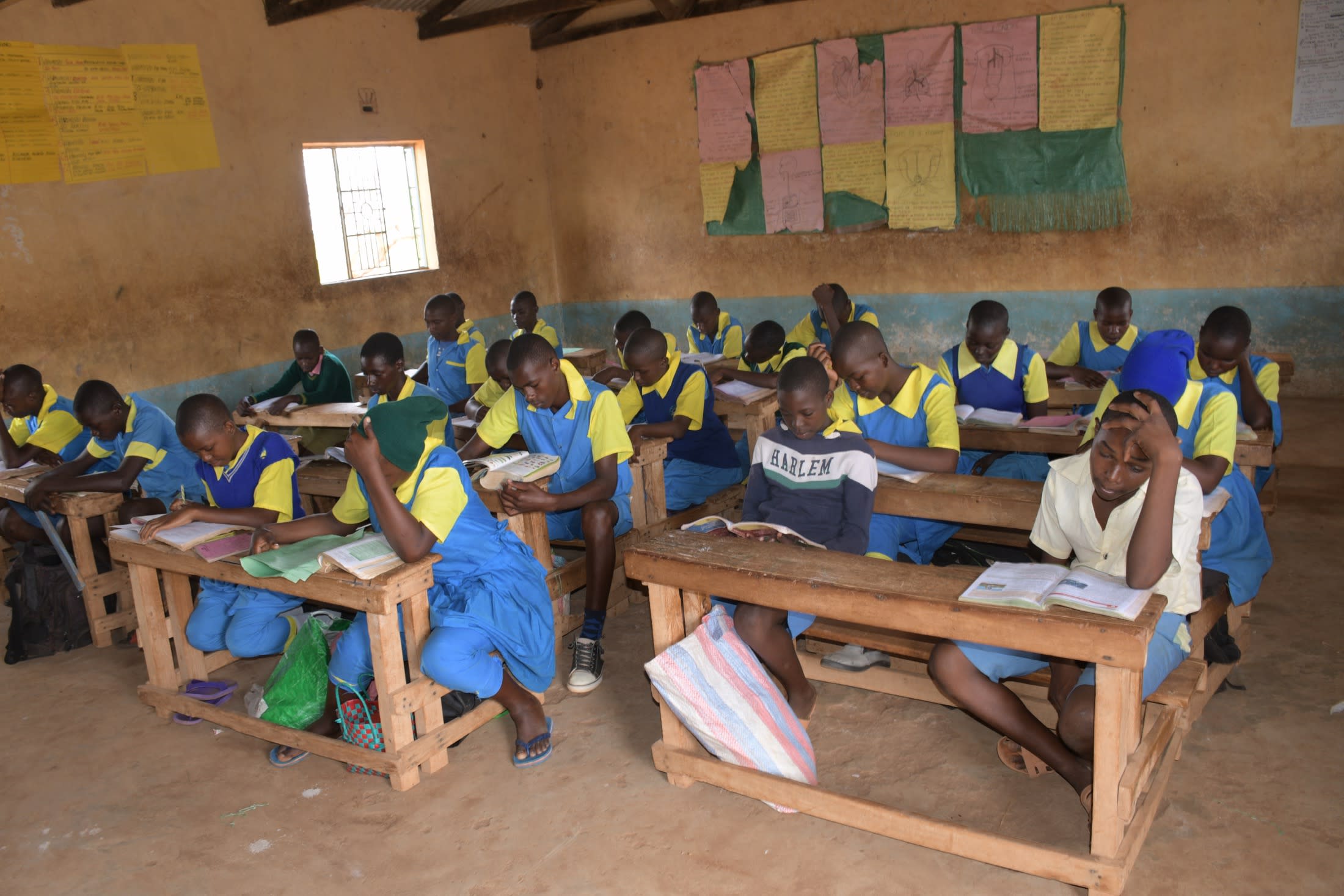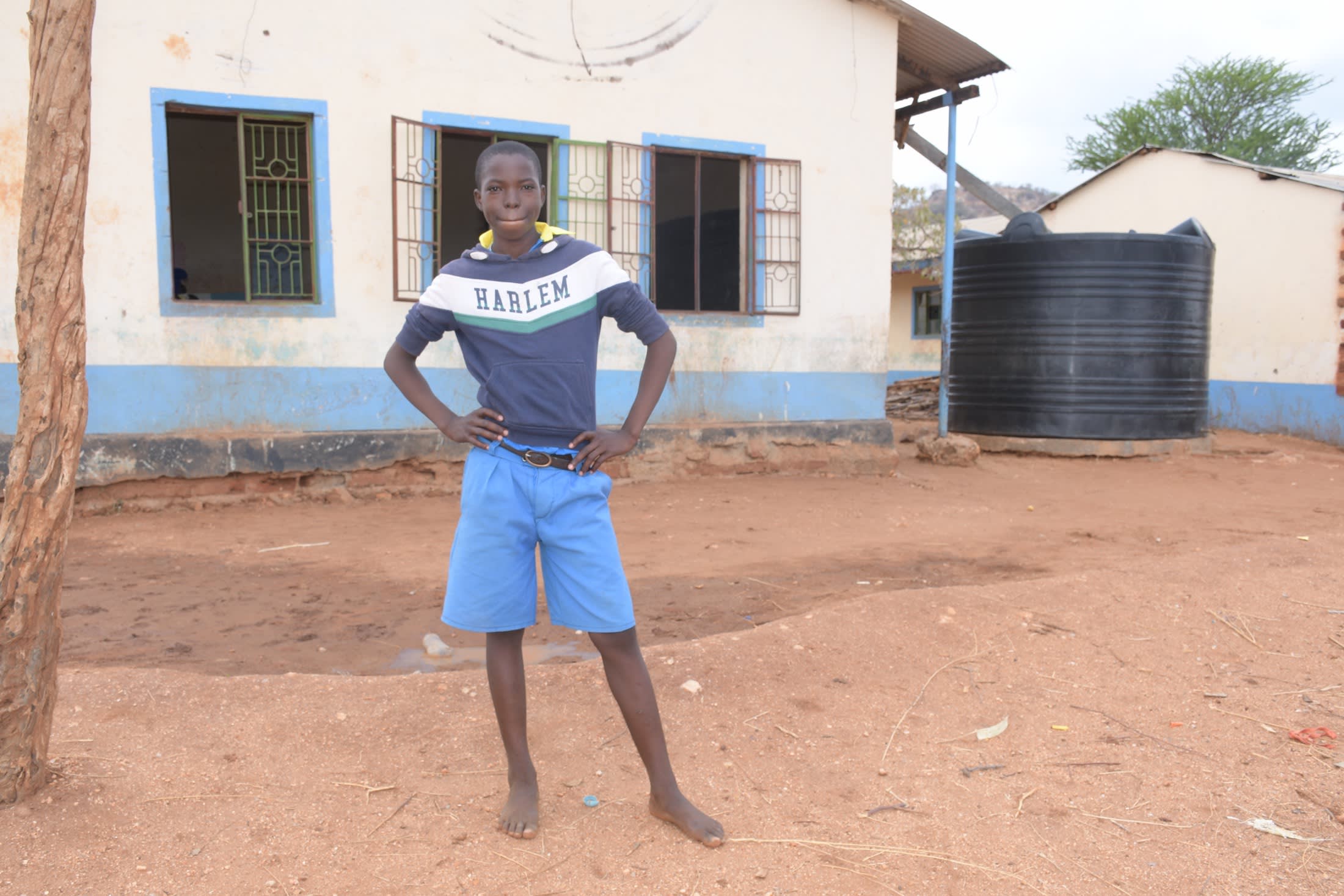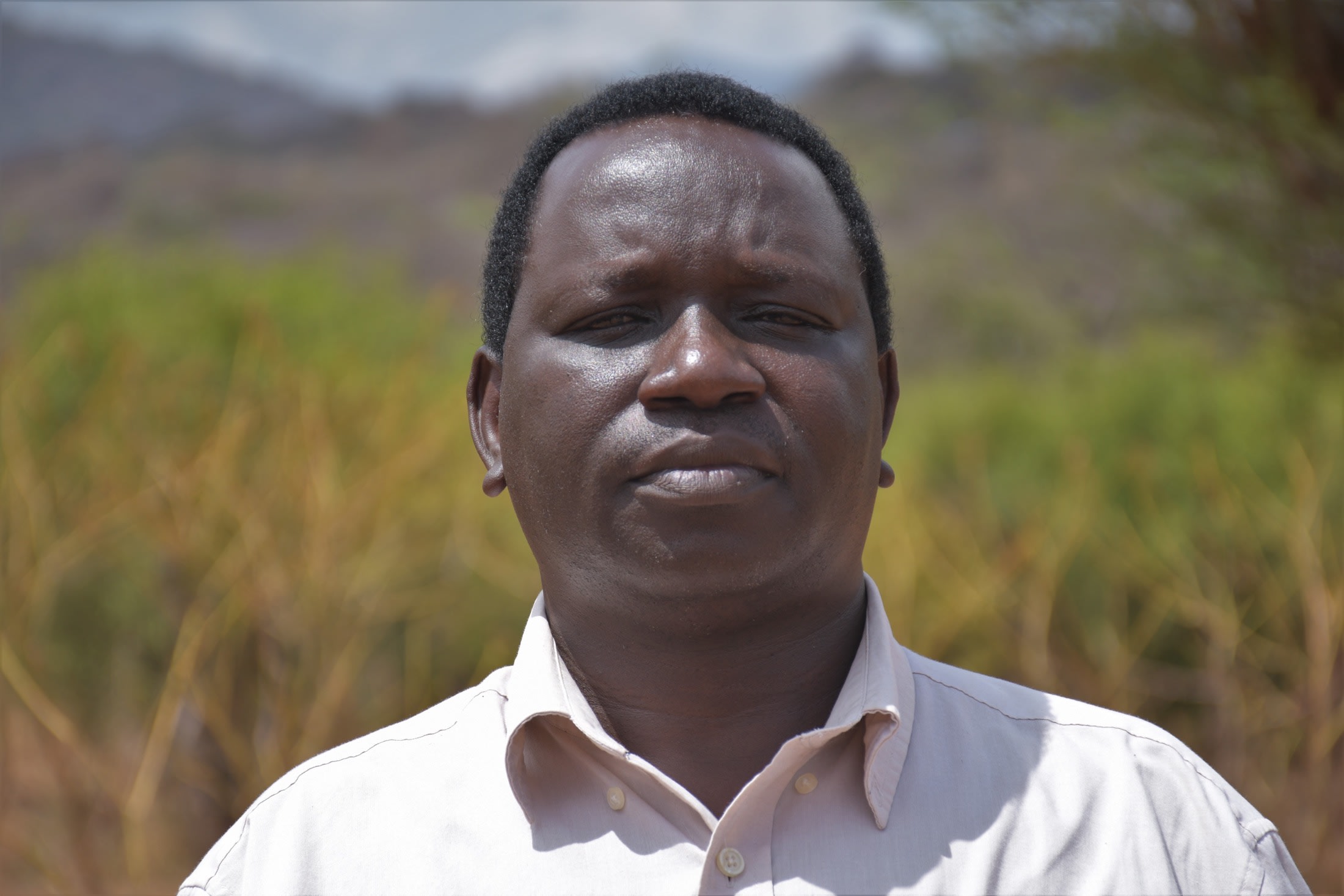The 172 students of Syomukii Primary School carry the burden of the school's water crisis on their shoulders. And although they expend costly physical energy bringing water to school with them every day, they fight an impossible battle that leaves them sick and exhausted.

"Students have to walk for several kilometers amid the scorching sun to access water for drinking and preparation of meals. This causes a lot of exhaustion and reduced concentration on academic performance. The rampant water inadequacy has also led to poor hygiene and sanitation, which has led to an unconducive learning environment," reported field officer Alex Koech.
"The requirement by the school administration to carry water to school forces me to fetch water from the distant scoop holes in the evening so that I can carry it to school in the morning," said student Dennis K. (shown below).

The school has a couple of small water tanks, but students can't fill them with enough water to meet their daily needs. The school administration tries to help by purchasing water from a local vendor each morning, but overcrowding at the water point causes delays. When this happens, students must attend classes without food or water, leaving them hungry and thirsty for a large portion of the day and unable to concentrate.
The scoop holes where students and the vendor collect water are open to contamination, and as a result, everyone's health is suffering. There are frequent reports of stomachaches, diarrhea, typhoid, amoeba, and dysentery.
"I often develop stomachaches. For instance, last week, I did not come to school because of stomach pains after drinking water acquired from the scoop holes," said Dennis.

"Most of the students are occasionally absent from school due to reasons like lack of water to carry to school or water-related infections. For instance, three of my pupils have not attended class today because they were sick. By the time they resume their studies, they would have already missed out on various topics, leading [to] poor academic performance," said teacher Perminus Kariuki (shown below).

The installation of a much larger rainwater tank will allow the school to collect sufficient water during the rainy season so students can be relieved of their burden. Also, resources funneled toward acquiring water will be used for other essential things. With time and energy to study, students will improve their academic performance and find time for some fun.
Rain Tank
We will build a 104,000-liter rain tank for this school, making the others look tiny in comparison. Because of how rarely it rains in Southeastern Kenya, this tank's large volume is designed to store as much water as possible during the seasonal rains, making more water available through the dry months. This water will benefit the students, teachers, and supplementary staff.
Parents will mobilize the materials needed for construction, including sand, stones, and water. They will also lend their strength and time to help with the construction. We will complement their materials with a skilled artisan to lead the project in addition to providing the tools, lumber, metal, cement, and gutter system.
As soon as the tank has time to cure, it can begin collecting rainwater for the school's use.
Training
We will train students and staff on sanitation, hygiene, and other topics for 1 day. Those in attendance will form a school health club that will promote good hygiene and sanitation practices both at school and at home. They will learn all of the steps to proper handwashing, how to treat water, and how to keep their environment clean. The school will also be taught how to best oversee and maintain their new rain tank and handwashing stations.
Handwashing Stations
A total of 3 handwashing stations will be installed upon the project's completion and before training. These are 1,000-liter plastic tanks fitted with 3 taps each, allowing 9 students to wash their hands at once. The student health club and school management will be responsible for making sure the tanks are filled with water and that a cleaning agent such as soap or ash is always available.

 Rainwater Catchment
Rainwater Catchment
 Rehabilitation Project
Rehabilitation Project































